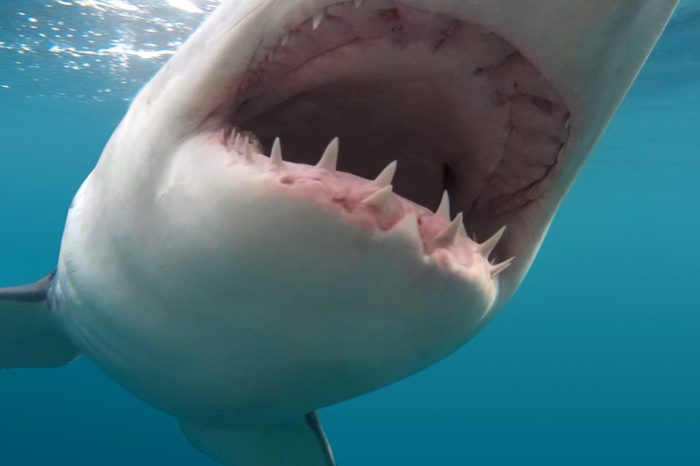
Sharks are cold-blooded killers
“[Many people have] the idea that sharks are out to get us, and will ‘attack’ the second we stick a toe in the water,” says shark researcher Blake Chapman, PhD, author of Shark Attacks: Myths, Misunderstandings, and Human Fear. “But millions of people swim in close proximity to sharks every year, most without even knowing there is a shark around. Very, very few people have negative encounters with sharks.” In fact, these 22 animals are far deadlier to humans than sharks.
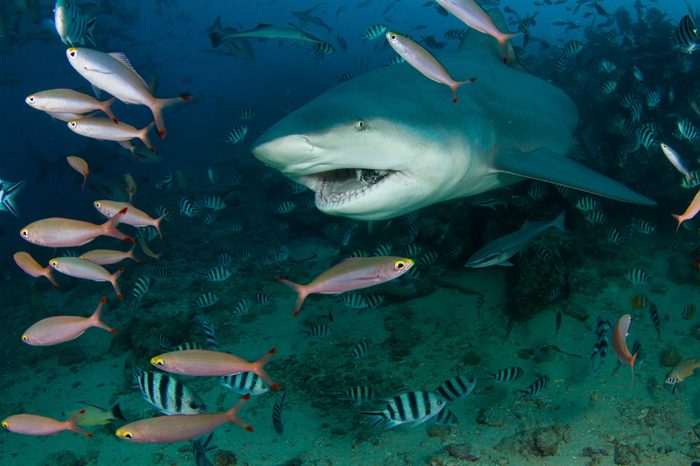
They develop a taste for human flesh
Experts agree that most unprovoked shark bites are likely investigatory—like, “Hey, what’s this? Is it food?” Large, aggressive sharks that feed on seals and other marine mammals—great whites, bull sharks, and tiger sharks—are the ones most likely to bite people, according to the National Geographic Society. As the National Ocean Service points out, sharks evolved hundreds of millions of years ago before humans existed, and therefore we’re not part of their natural diet. Most sharks actually live on small ocean creatures like fish and squid. For more reassurance, here are some more comforting—and fascinating—facts about sharks.
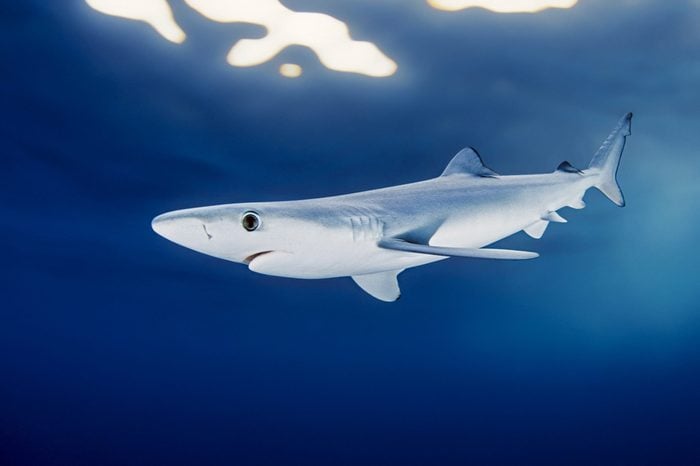
Female sharks need males to make babies
Some female sharks have the power of parthenogenesis—the ability to fertilize their own eggs and have offspring without a male shark. That’s usually something seen in plants and insects likes wasps, ants, and bees.
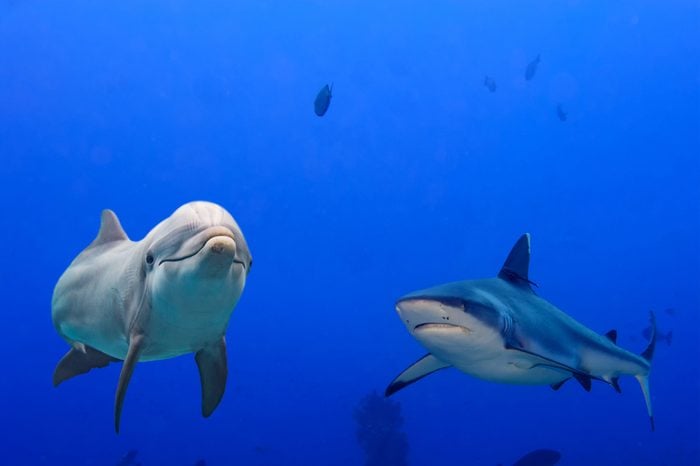
Sharks are afraid of dolphins
You may have heard that if you see dolphins in the water, it’s “safe” to swim because it means sharks won’t be anywhere close. But sharks and dolphins often cruise the same waters because they eat many of the same animals, like schooling fish, squid, and crustaceans, according to the Sarasota Dolphin Research Program. They also sometimes eat each other: Dolphins feed on smaller shark species and large sharks are known to attack dolphins.
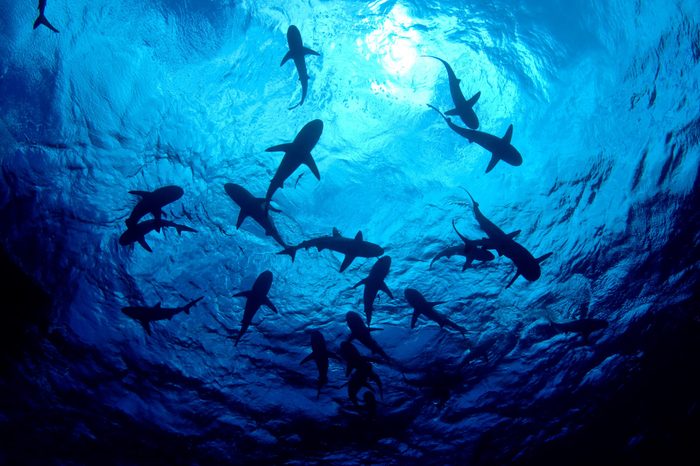
All sharks are the same
“‘Sharks’ get a bad rap, but in fact, there are over 500 different species of sharks—each as different as the next,” says Dr. Chapman. “Sharks are true survivors and evolutionary champions. They are so perfectly designed to their needs, whether it be environment, nutritional needs, ways of finding prey and mates, and avoiding predators themselves. As a result, there is no generic ‘shark.’ Instead, there are 500+ absolutely amazing animals worth knowing about.”
While lots of shark species grow quite large and have big teeth, the largest among them—whale sharks and basking sharks that frequently grow up to 40 feet—are docile and not dangerous to humans. There are tons of smaller little sharks too: The dwarf lantern shark is so tiny it can fit in the palm of your hand, and coral catsharks rarely grow bigger than 2 feet, making them a very popular pick for home aquariums. That said, there is one type of shark you’ll never see in an aquarium.
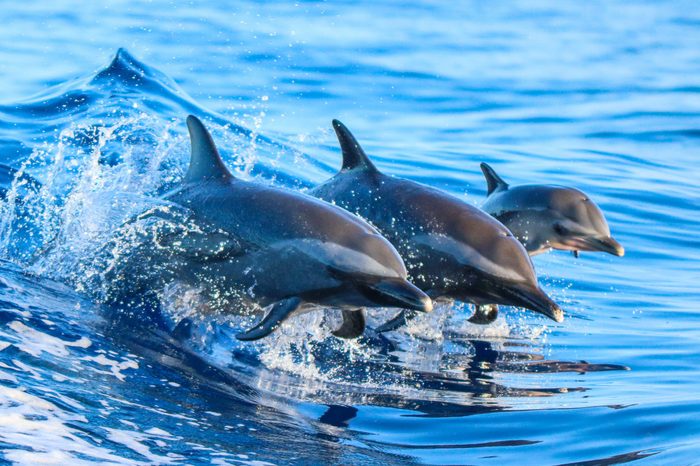
Sharks have no predators
As we said above, dolphins sometimes eat small sharks. And orcas—the largest members of the dolphin family—even attack and feed on great whites, according to the Sarasota Dolphin Research Program. But the biggest threat to sharks is humans. Research suggests that humans kill an estimated 100 million each year. Unfortunately, dwindling shark populations may have a negative effect on the ocean ecosystem—these apex marine predators are absolutely vital to our oceans.
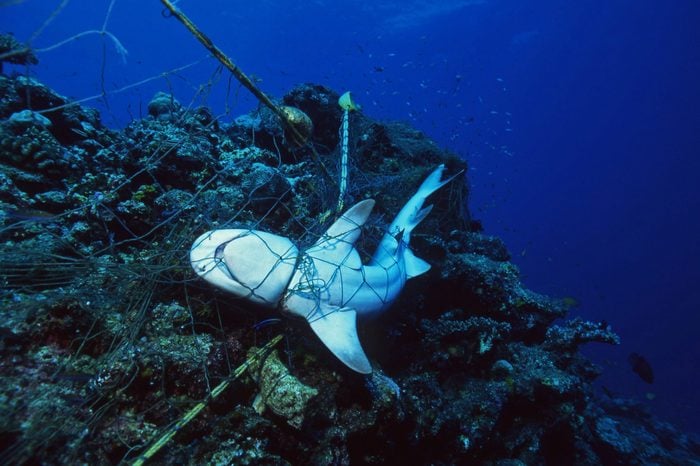
Shark nets are a good way to protect swimmers
Australia has the second-highest number of unprovoked shark bites in the world, after the United States, according to research by Dr. Chapman and her coauthor Daryl McPhee, PhD, an associate professor of Environmental Science at Bond University. Most of the attacks have happened off the coast of New South Wales, according to the ISAF. In an effort to protect swimmers and surfers, the Australian government has tested shark nets in the area for many years, hoping to catch aggressive sharks that are most likely to bite humans such as great whites and bull sharks. But many other animals, including some that are endangered, have fallen into the traps instead. In one five-month period, out of all 145 animals caught, only two were target sharks, according to news reports. Most of the animals caught in these nets die.
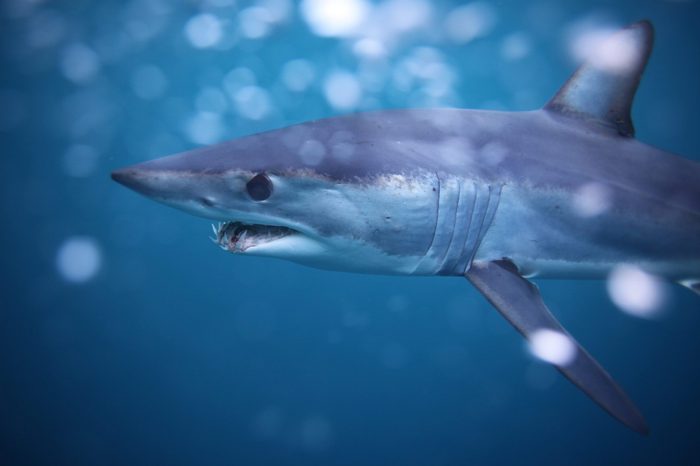
Sharks can’t stop swimming or they’ll die
Sharks have several gill slits on each side of their necks—as they swim, water flows into their mouths and over their gills, and the gills pull oxygen out of the water. Great white sharks, makos, and whale sharks have no other way to breathe, and they have to keep swimming to get oxygen, according to the Smithsonian Institution. But many others can suck water into their mouths and pass it over their gills on their own while sitting motionless, including nurse sharks, angel sharks, and the very strange-looking tasselled wobbegongs.
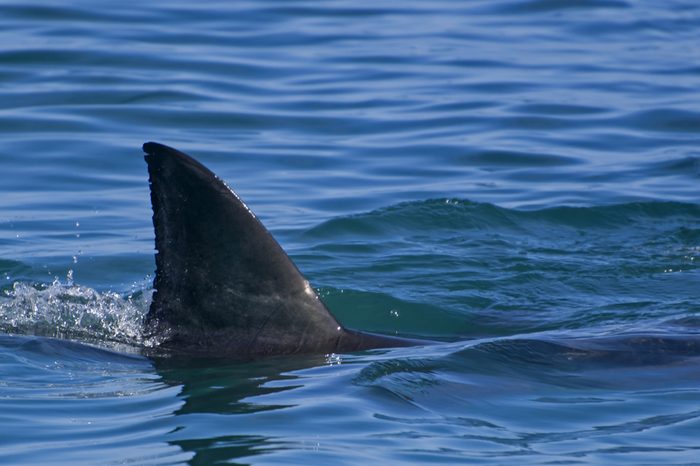
Shark fins have medicinal properties
Shark fin soup is a delicacy in China and was traditionally believed to have health benefits. But modern scientists point out that shark tissue, including the cartilage of the fin, can be extremely high in mercury and other toxins. What’s more, shark fishing—much of which is done to obtain the fins for the high-priced soup—kills up to 100 million animals each year, endangering several different species, and perhaps even the whole ocean ecosystem.
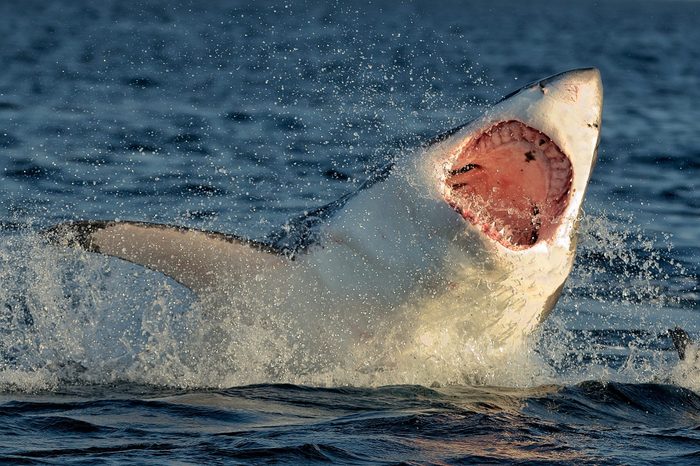
If you’re bitten by a shark, you’re a goner
You’re more than twice as likely to die from a lightning strike than a shark bite, according to the Florida Museum’s International Shark Attack File (ISAF). Even if you are bitten, “the large majority of people survive,” says Dr. Chapman. There were 66 unprovoked shark bite incidents around the world in 2018, only six of them fatal, according to the ISAF.
